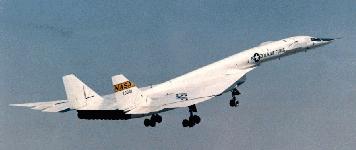



Valkyrie – North American’s Mach 3 Superbomber
Dennis R. Jenkins & Tony R. Landis
© 2004 Specialty Press
Review by Ned Barnett
(Review Copy provided by Specialty Press)
Ohmygosh – this book is remarkable. Fantastic. Fascinating. Detailed almost beyond belief. This is without a doubt the most comprehensive volume on a single experimental aircraft type that I have ever read, and considering the fact that I’ve been a voracious reader of books on aviation technology since 1962, that’s saying a lot.
First of all – this book, produced by Specialty Press, is a beautiful example of the printer’s art. It is remarkably well-manufactured, well-designed and well laid-out. The balance of color and B&W photography, graphs and charts and line drawings – and text, reams of informative text – is a classic example of what an aviation-technology book ought to be about.
If you have any interest in the B-70, this book is for you. However, if you DON’T have any interest in the B-70, this book is still for you – it absolutely will change your mind about the Valkyrie. I know. Before I got a review copy of Valkyrie from Specialty, I never really cared much for this failed exercise in creating a high-speed manned bomber. I’d seen the cine-film shots of the plane’s fatal crash on a test flight, and viewed the B-70 Valkyrie as a tragic technological “bridge too far,” one that cost the lives of brave men, yet led nowhere. Besides, as a modeler, I could hardly get too interested in an aircraft that had basically one marking scheme during its too short test career. It never flew combat, never carried squadron markings or nose art, never flew in camouflage – or even bare metal. It was white, dull, unadorned – a failure.
Wrong! Oh, sure, the plane flew in one basic marking scheme. But it still offers modelers a lot of opportunities for creating something distinctive. The Valkyrie flew so fast that the paint burnt off, leaving the plane looking like it had a bad case of acne. The Valkyrie landed at such high speed that burnt-up tires were a constant companion, offering modelers interesting vignette/diorama possibilities – the famous (at least famous among B-70 fans) “tip-toe” landing just begs for a diorama. This plane had more than it’s share of landing incidents, including a near-disaster on it’s maiden flight – all of which could be modeled. And that’s just the beginning.
The Valkyrie went through more provisional designs – many of them visionary, others nothing short of bizarre – than you can shake a large-sized stick at, and this exceptional book covers them all, with line drawings, photos of desktop models, and remarkably informative text. I literally had no idea just how fascinating the development of this Superbomber really was, but this book was enough to open my eyes.
The B-70 was not an aircraft developed in isolation – a series of Mach 3 fighters were created in lock-step; none went into production, but when you see these sleek machines and marvel at their performance, you’ve got to wonder why. In addition, the Valkyrie was planned to be more than “just” a multi-sonic strategic bomber. Designers saw it as a launch vehicle for the X-15 rocket plane, for nuclear-armed ICBMs, for manned Gemini spacecraft and for low-earth-orbit satellites. And that was just for starters. However, no matter how remarkable the aircraft was (and it was VERY remarkable) the Valkyrie ultimately fell victim, first to the potential threat from Soviet SAM missile technology such as the SA-2 that shot down a high-flying U-2 spy plane, and more directly to the dubious management style and budget-cutting talents of President Kennedy’s Secretary of Defense, Robert McNamara. This is the man who also gave us the botched TFX program … and, perhaps coincidentally, the man who finally admitted that he lied to Congress and the American people about Tonkin Gulf in order to “justify” an aggressive war in Vietnam, a war that cost American 58,000 fighting men to no good purpose.
While it’s a shame that the Valkyrie didn’t become operational – this is a conclusion I reached after reading the book – McNamara’s budget-cutting decision that killed the B-70 is a minor issue compared to this once-respected Secretary of Defense’s blood-soaked dishonesty over Vietnam. If McNamara ever made a good decision as Secretary of Defense, I’m not aware of it. Killing off what was arguably the most remarkable aircraft developed to that time is merely an example of the kinds of bad decisions McNamara made while serving under Presidents Kennedy and Johnson.
Almost none of this political rant is in the book – I just have strong feelings about McNamara’s lies and the blood-price America paid for his misguided decisions – but his impact on the B-70 is noted. No matter how you feel about McNamara – or Vietnam – set that aside and enjoy this book. It’s about technology, not politics, and it’s perhaps the most stellar book on a single airplane I’ve ever seen.
I generally skim review books – except those that really zero in on my areas of personal interest. This should have been a “skim-job” – but instead, I invested an entire weekend reading it from cover to cover in one giant gulp. Sleep? Who needs it!
Unless I haven’t made it clear, I cannot recommend this book too highly. From every perspective – text, illustrations, design, even printing – this is an exceptional book and well worth your investment in time and dollars or pounds-sterling (available in the UK from Midlands Books, or from Amazon.com).
No comments:
Post a Comment